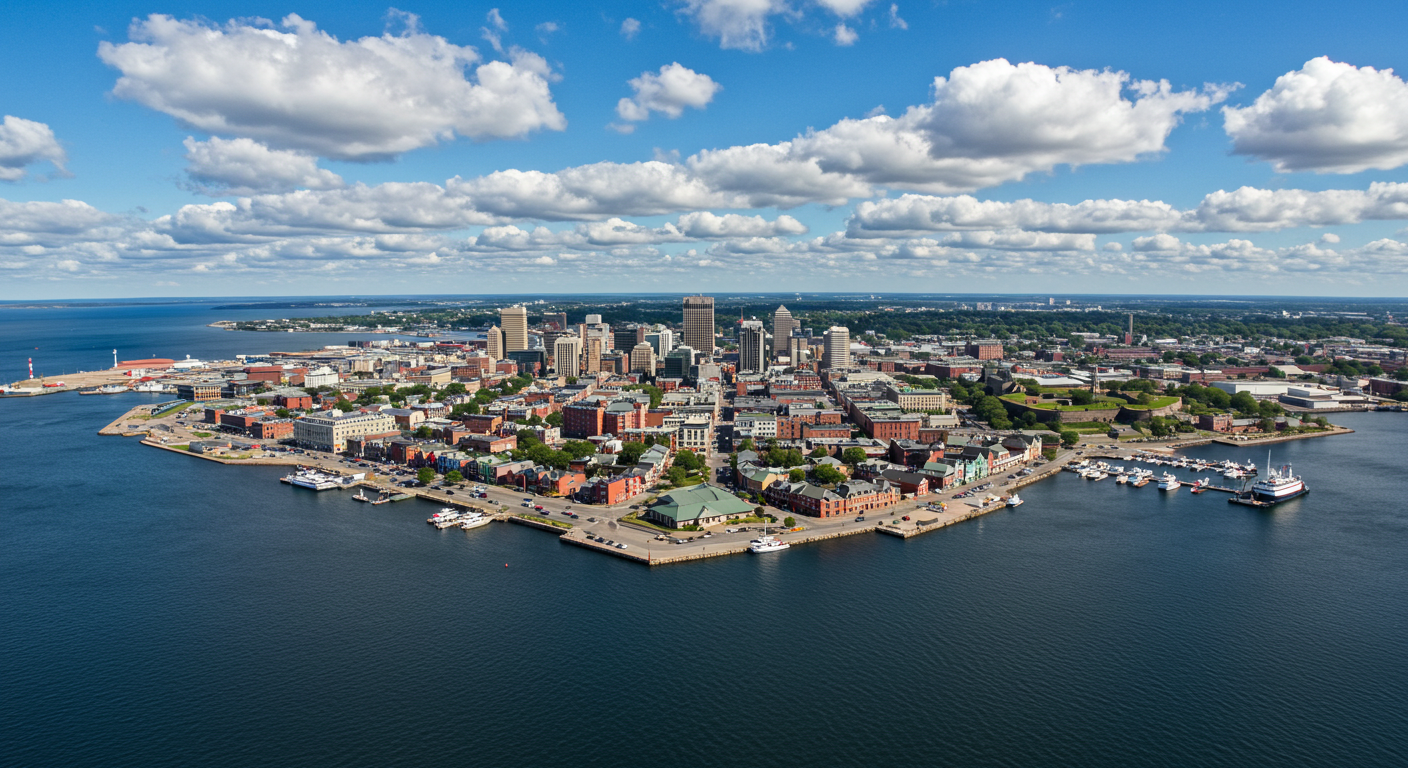Nothing beats sipping hot coffee in a cozy café in Vancouver while working on your laptop or the feeling of answering emails from a lakeside cabin in Ontario on a chilly afternoon.
That’s the lifestyle that awaits any digital nomad who chooses to explore Canada. The visa for this category falls under temporary immigration.
According to the Canadian government, digital nomads don’t need a work visa to work remotely from Canada. You can visit for up to 6 months at a time.
We have prepared this guide to explain everything you need to know about moving to Canada as a digital nomad. This includes visa options, choosing the best cities, finding a place to stay, and understanding the cost of living.

Key Takeaways From This Article
- The best cities for digital nomads in Canada include Ottawa, Vancouver, Toronto, and Montreal (the best for nomads on a budget).
- To enter Canada as a digital nomad, you usually need a valid passport and either a Temporary Resident Visa (TRV) or an Electronic Travel Authorization (eTA), with proof of sufficient funds, evidence of remote employment, and health insurance.
- The processing time is between 1 and 2 months. You must fill out the IMM 5257 form on the IRCC website.
- Canada has four seasons, and the weather can vary a lot by city and can impact your productivity.
- For accommodation needs, check out the various furnished apartments for rent in various Canada provinces.
Documents Required For Digital Nomad Visa Canada

Before applying for the Canada Digital Nomad Visa (technically a temporary resident visa or visitor visa, depending on your situation), it’s important to gather the right documents.
1. Proof of Funds (Bank Statement)
You must show that you have enough money to support yourself while living in Canada.
- Provide your bank statements for the past six months.
- The statement should clearly show your name, account balance, and regular income.
- Although there’s no fixed amount, it’s recommended to have at least CAD $2,000–$3,000 per month of planned stay to cover accommodation, food, and travel expenses.
2. Proof of Employment (Remote Work)
This is key to proving that you’re a digital nomad and can work independently of your location. Your current employer should provide a job offer or employment verification letter. It should state:
- Your role
- That you’re a remote worker
- That your employer is based outside Canada
3. Proof of Accommodation in Canada
You must show where you’ll be staying during your time in Canada. Acceptable documents include:
- A rental agreement or lease with your name on it
- A hotel or Airbnb booking
- A letter from a friend or family member in Canada stating that you will stay with them (plus a copy of their ID and proof of address)
You may need to provide reference letters from previous employers or clients. Also, you need to have proof of health insurance coverage.
The bottom line is that most people need a visa or an electronic travel authorization (eTA) to travel to or transit through Canada. Some people may only need their valid passport. On the official Canadian government website, there’s a facility for you to answer a few questions to see what’s right for you.
Canada Digital Nomad Visa Application Form
Canada doesn’t offer a visa specifically labeled “digital nomad visa” like some countries do. However, if you work remotely for a company or clients outside of Canada, you can still stay in the country legally as a visitor and continue working online.
As a digital nomad, you’ll apply for a visitor visa, officially called a Temporary Resident Visa (TRV). This allows you to stay in Canada for up to six months and work remotely during your visit, as long as your employer or clients are based outside Canada.
Step-by-Step: How to Apply as a Digital Nomad

Here’s how it works and what you need to do:
Step 1: Fill Out Form IMM 5257
This is the official application form for a Canadian visitor visa. You can find it and fill it out online through the IRCC website. The form will ask for personal details, your reason for visiting Canada, and information about your background.
Step 2: Submit Your Application
Once the form is complete, you can apply online, which is usually faster and more convenient, or apply through a Visa Application Center in your country. Ensure you follow any specific instructions based on your country of residence.
Step 3: Pay the Visa Fees
There are two main fees:
- Visitor visa application fee – typically around CAD $100
- Biometrics fee – usually CAD $85, if biometrics are required
Step 4: Provide All Required Documents
You’ll need to upload or submit documents that have been explained earlier, such as:
- Your valid passport
- Recent passport-sized photos
- Proof of funds (like bank statements)
- Proof of employment (showing you work remotely)
- Travel plans or accommodation details
Step 5: Go for Biometrics (If Required)
Most applicants between the ages of 14 and 79 need to go to a biometrics collection center where they will provide fingerprints and have their photo taken.
Canada doesn’t have a separate visa category for digital nomads. You apply just like any other visitor. As long as you’re not working for a Canadian employer or doing business within Canada, you don’t need a work permit. You can legally do your remote job during your stay.
Digital Nomad Visa Canada Processing Time
Getting a digital nomad visa usually takes between 1 to 2 months. However, the exact time can vary based on factors like how complete your application is, whether your documents are correct, and how many other people have applied at the same time.
Best Cities In Canada For Digital Nomads
There are over 30 cities in Canada (ones with over 10,000 population). If you’re a digital nomad, you’d want to focus on these four cities. To a great extent, they have a cost-effective living with reliable internet, a thriving ecosystem of coworking spaces, and a welcoming community.
1. Ottawa

As Canada’s capital, Ottawa is a top contender for the most attractive place for digital nomads in Canada. Some tourists argue that living here is expensive, but that is only relative because many digital nomads gravitate to this part of the city for its affordability, quality of life, and access to nature. Corporate Stays has premium furnished apartments for rent in Ottawa in various locations.
2. Toronto

Toronto has many cafés with Wi-Fi, such as those in Kensington Market and Queen Street West, where nomads can work comfortably. The CN Tower, Royal Ontario Museum, and Harbourfront are great for sightseeing during breaks.
Toronto offers plenty of networking chances. It is even home to prominent tech businesses like Shopify and Google, and a flourishing startup culture. Nomads who love city life, culture, and networking should choose Toronto. You can check out our furnished apartments in Toronto ideal for temporary stays.
3. Vancouver

Vancouver offers fast internet, modern co-working spaces like The Profile and Werklab, and many cafés with great views (especially in neighborhoods like Gastown and Mount Pleasant). However, living costs in Vancouver can be high, especially when it comes to housing. However, there are affordable furnished apartments in Vancouver for digital nomads.
What makes Vancouver special is its natural beauty. Digital nomads can take work breaks by walking along the Stanley Park Seawall, exploring Granville Island, or hiking in Grouse Mountain. The city has a mild climate (by Canadian standards).
4. Montreal

Montreal has a lower cost of living compared to cities like Toronto or Vancouver, which makes it easier for nomads on a budget. A study by Zumper, a real-time rental market trend tracker, revealed that Montreal is more affordable than other large cities, with the median monthly rent for all unit types being C$1,840, or almost 3% less than the national average.
So there won’t be any funny money surprises when searching for short term rentals in Montreal as a digital nomad. The city is especially great for writers, artists, tech developers, designers, and remote workers in the arts or media.
The city has strong Wi-Fi, cozy cafés (like those in the Plateau or Mile End), and plenty of co-working spaces such as Notman House and WeWork. During your downtime, you can visit landmarks like Old Montreal and Mount Royal or enjoy festivals like Just for Laughs and MUTEK.
Seasonal Considerations for Digital Nomads in Canada
Canada has four seasons, and the weather can vary a lot by city. As a digital nomad, your comfort and productivity may depend on the climate where you stay.
Winter is from December to February. In Toronto and Montreal, expect snow and freezing temperatures. Vancouver is milder, with more rain than snow, so it’s more comfortable if you dislike extreme cold.
Between March and May is spring. During this time, the weather warms up, but some places still get snow early on. For example, Calgary and Ottawa can be chilly in March, while Victoria (on Vancouver Island) starts blooming early.
From June to August, which is summer, Toronto, Ottawa, and Montreal can be hot and humid. Vancouver is cooler and less humid, great for outdoor work. Halifax (East Coast) is breezy and pleasant. If you want mild weather year-round, Vancouver and Victoria are your best bets.
Accommodation Options For Digital Nomads in Canada: Corporate Stays Furnished Rental Apartments

As a digital nomad, on-the-go is usually your thing. You want apartments that are in downtown or central areas near cafes, coworking spots, and transport. Also, the focus is on options that have flexible lease terms, such that you can book for weeks or months without being locked into long contracts.
That’s where we come in. With over ten years of experience in the hospitality and housing industry since 2008, Corporate Stays knows the ins and outs of apartment rentals in Canada.
Our short-term and furnished apartment rentals in over 16 cities have generous balconies with stunning waterfront views, offering the perfect blend of relaxation and luxury. You can take a look at the various shortlets available in various Canadian provinces.

